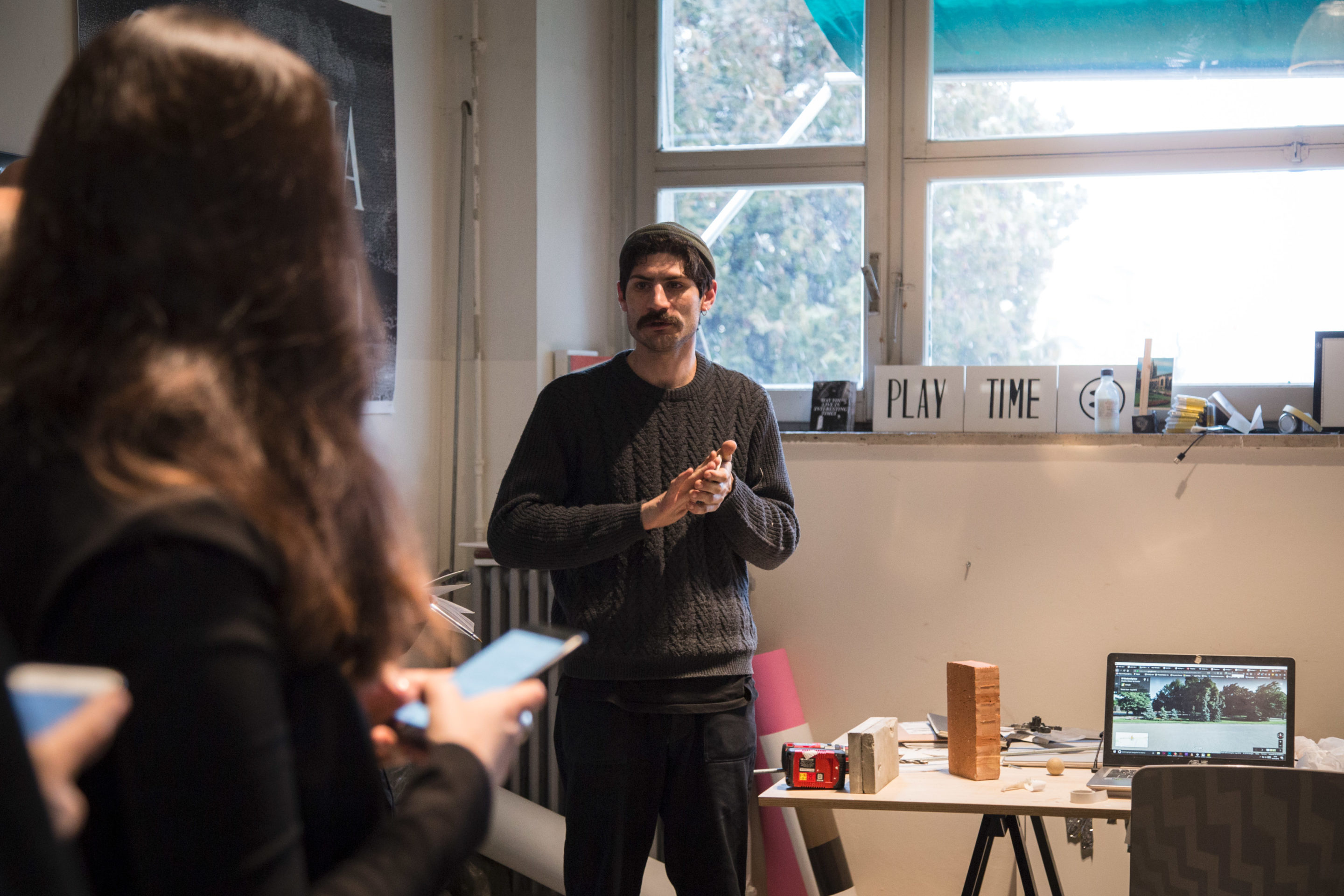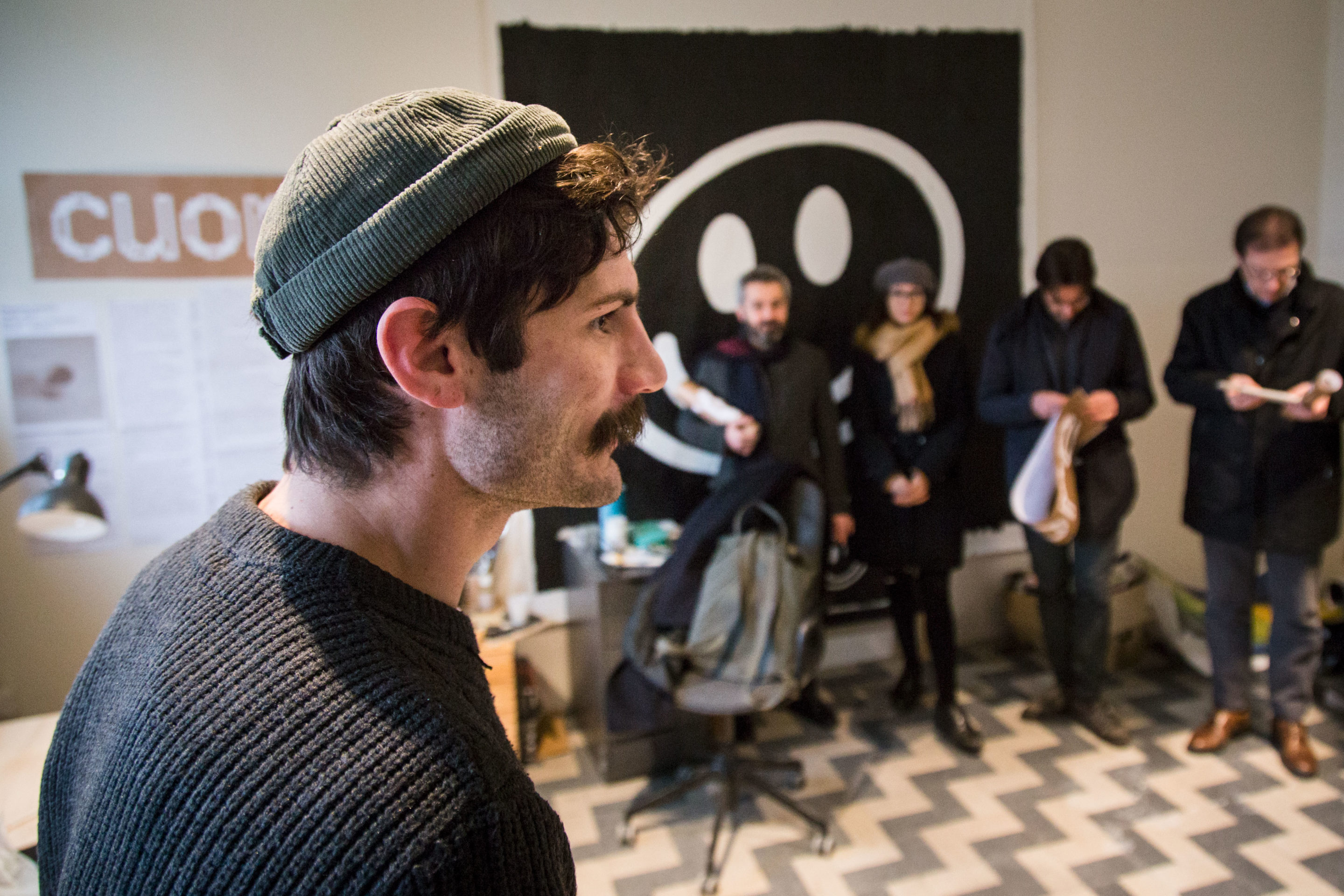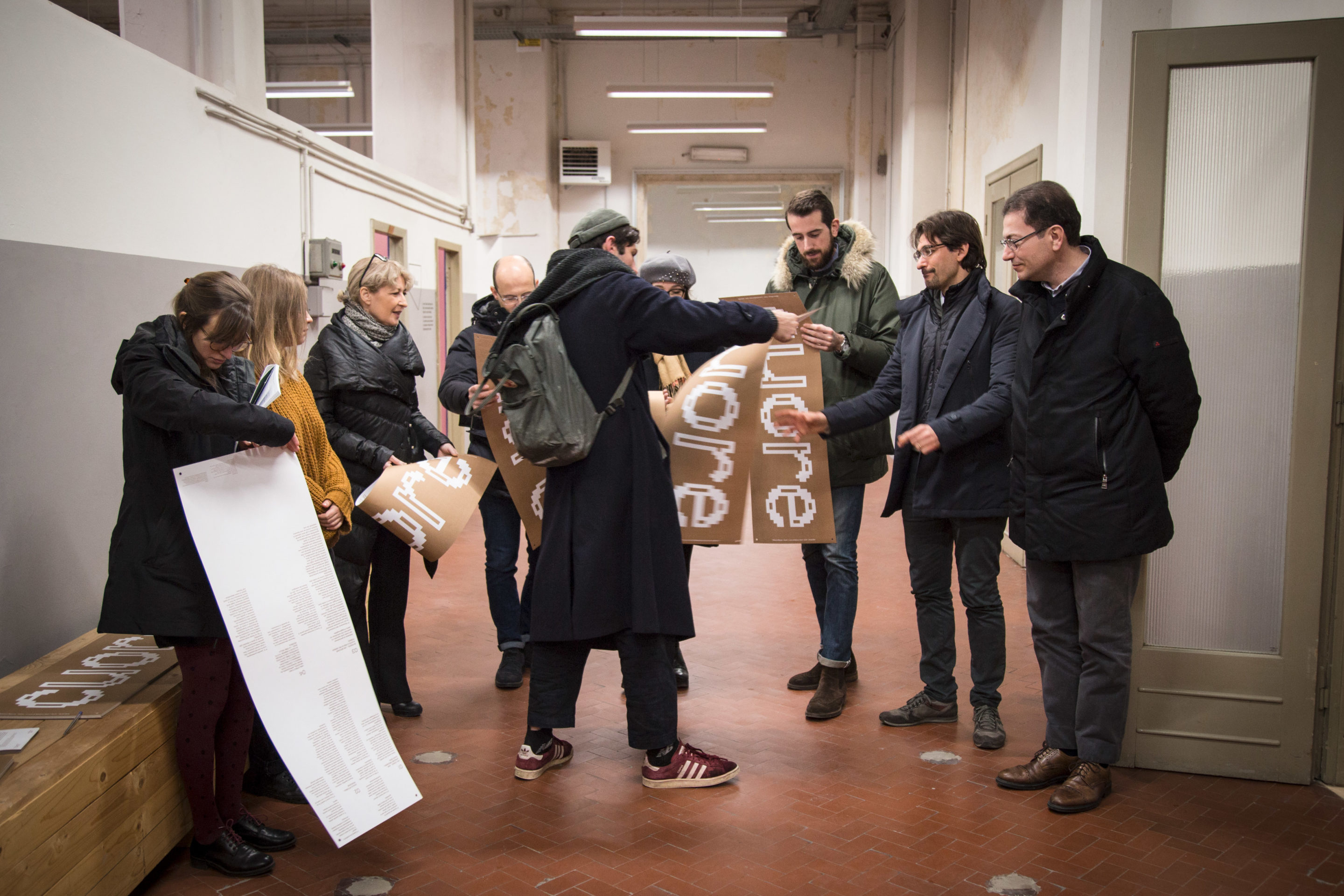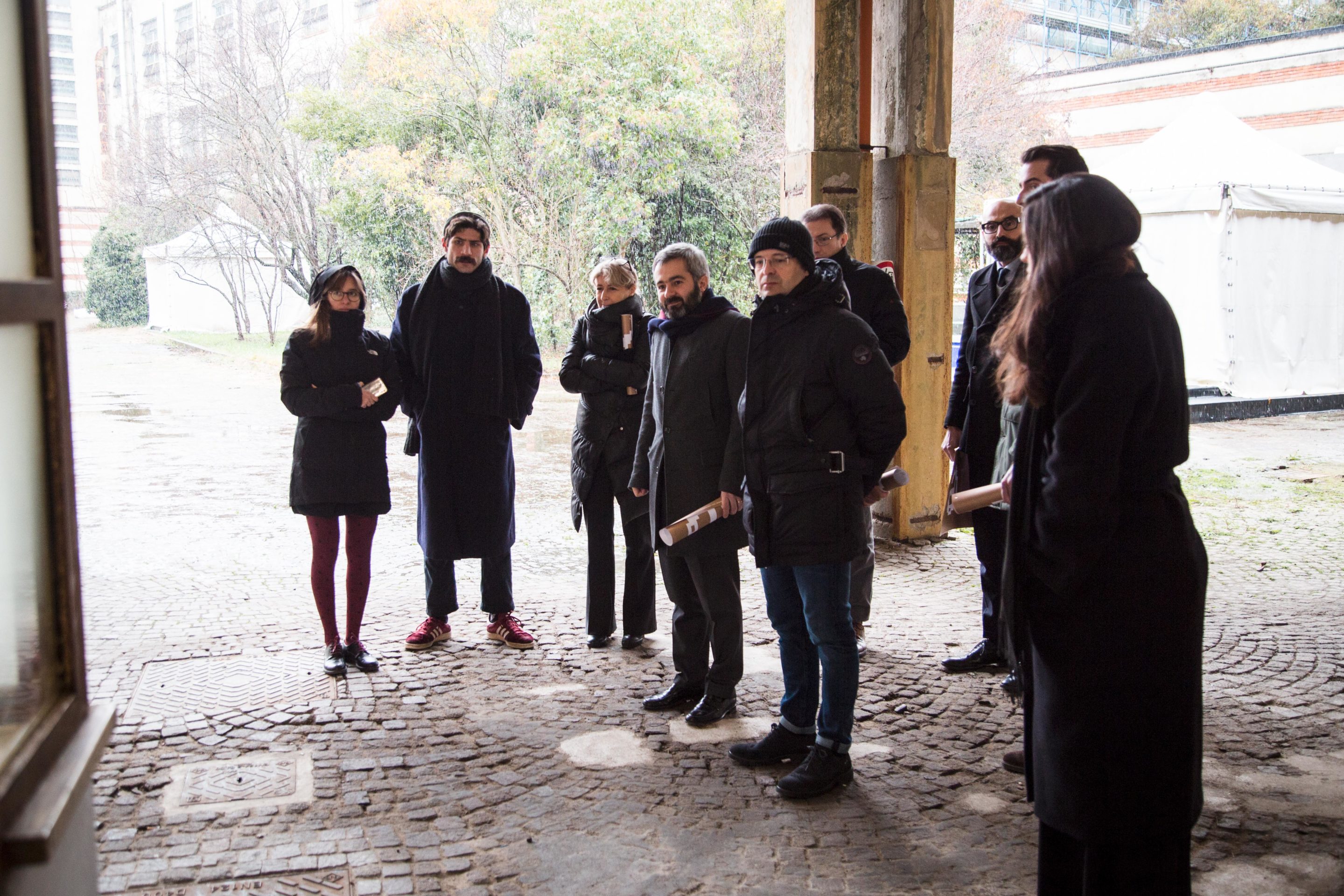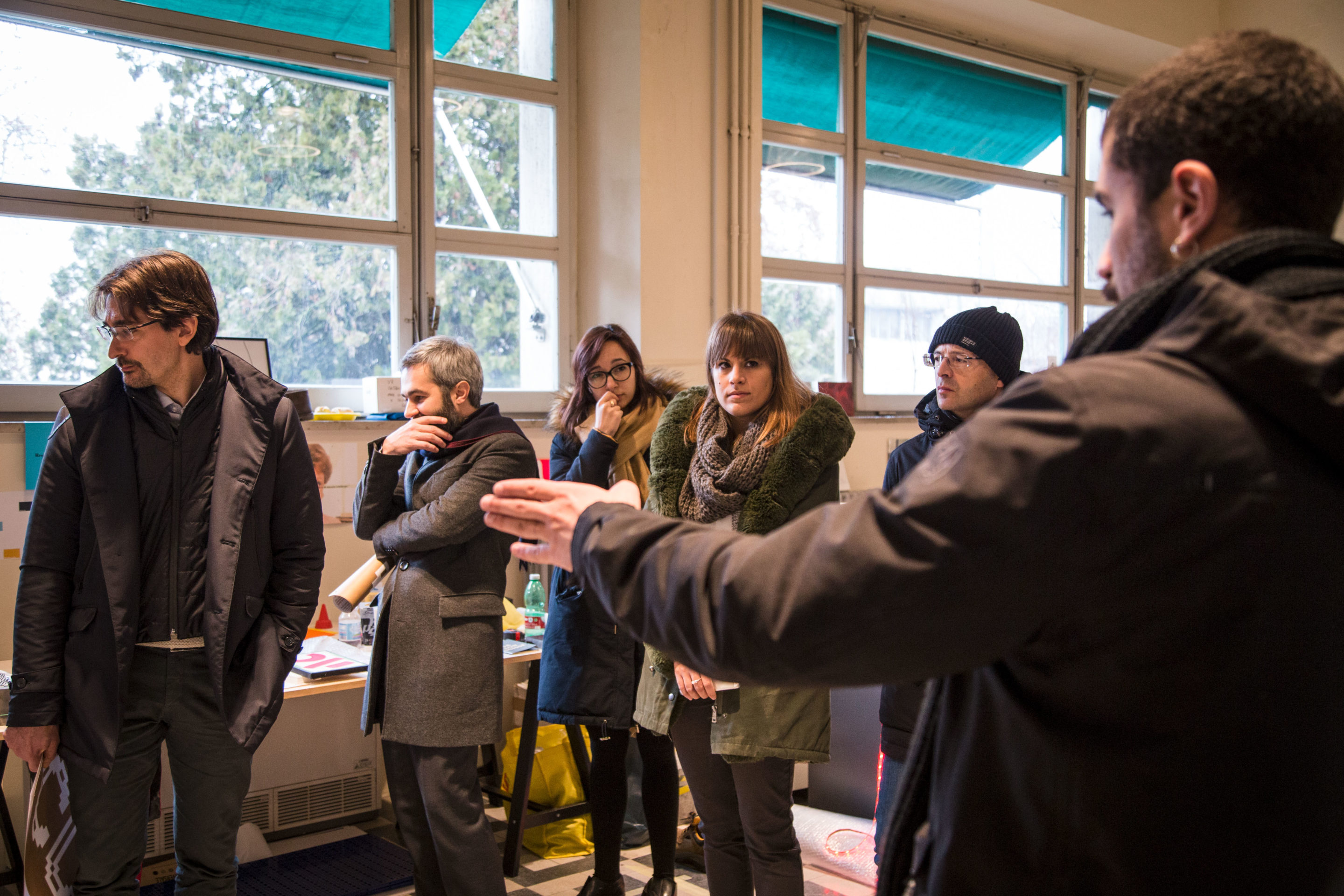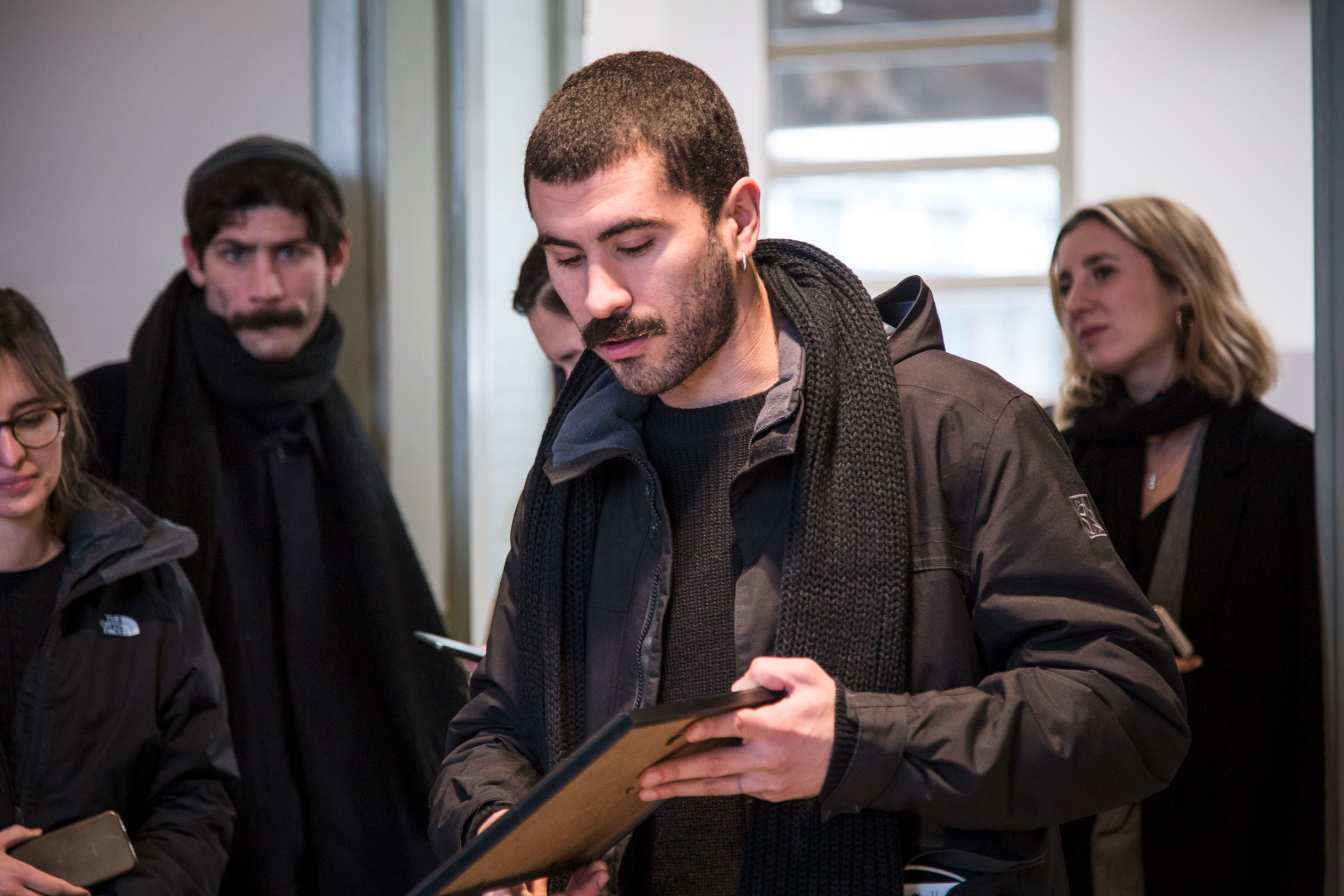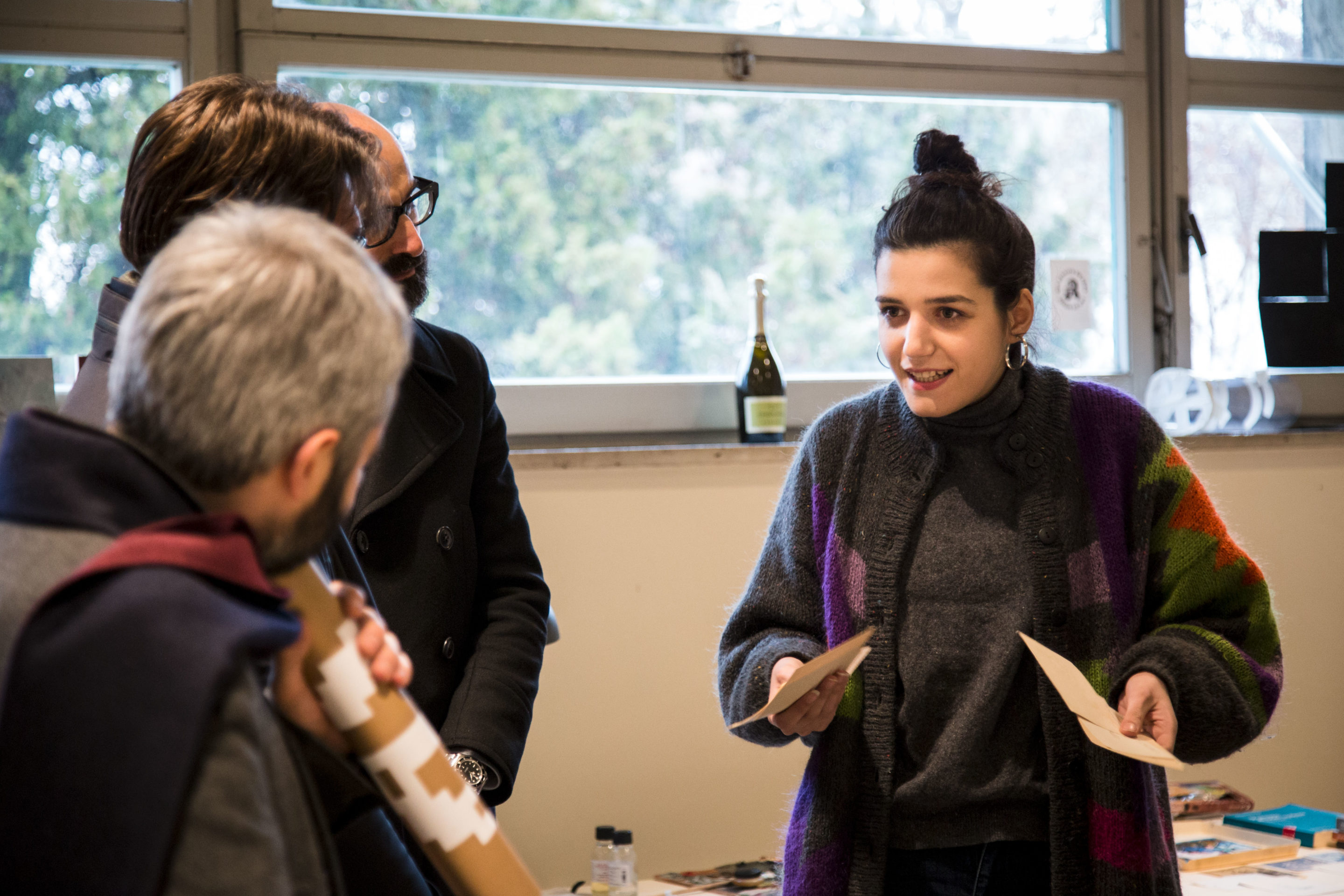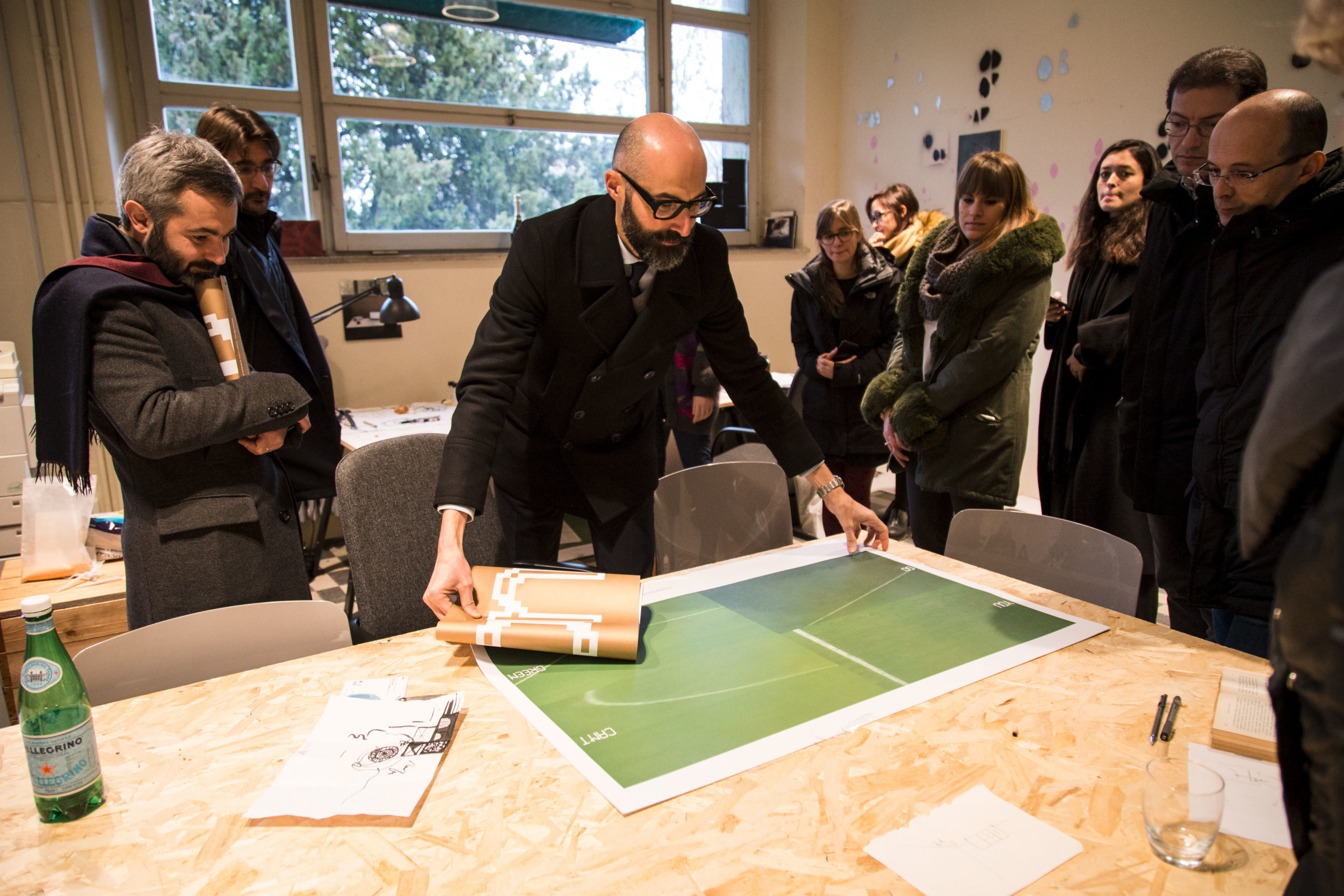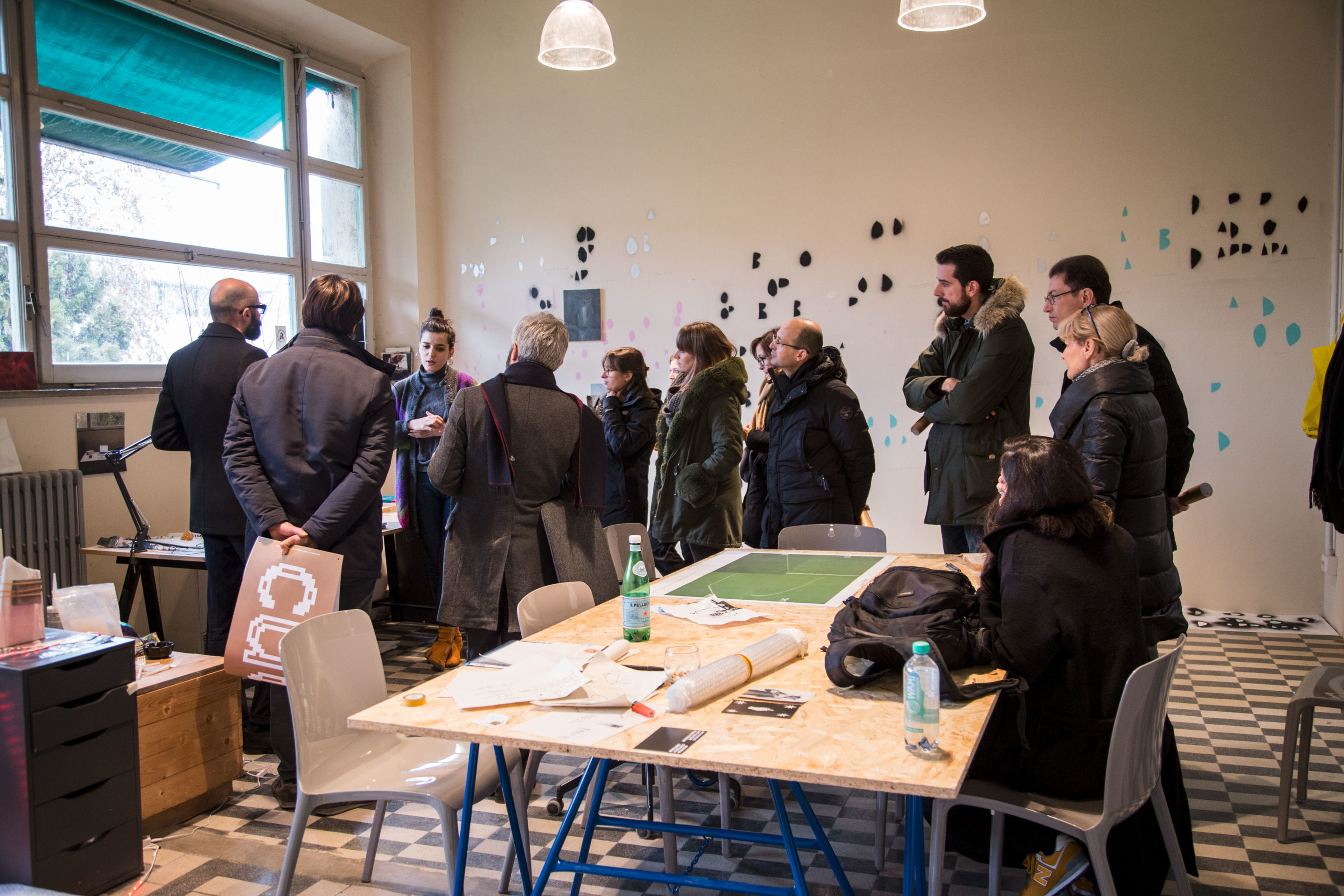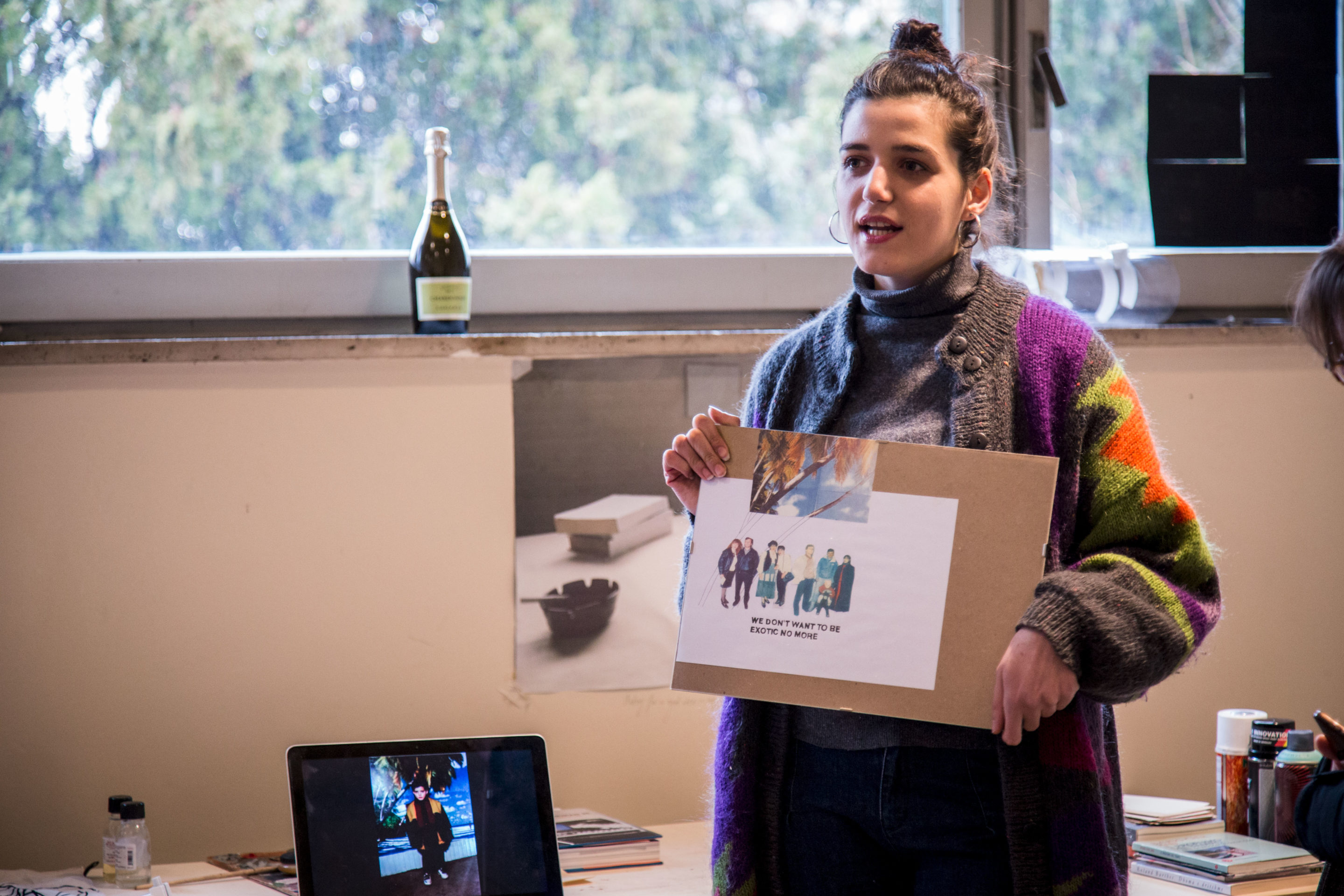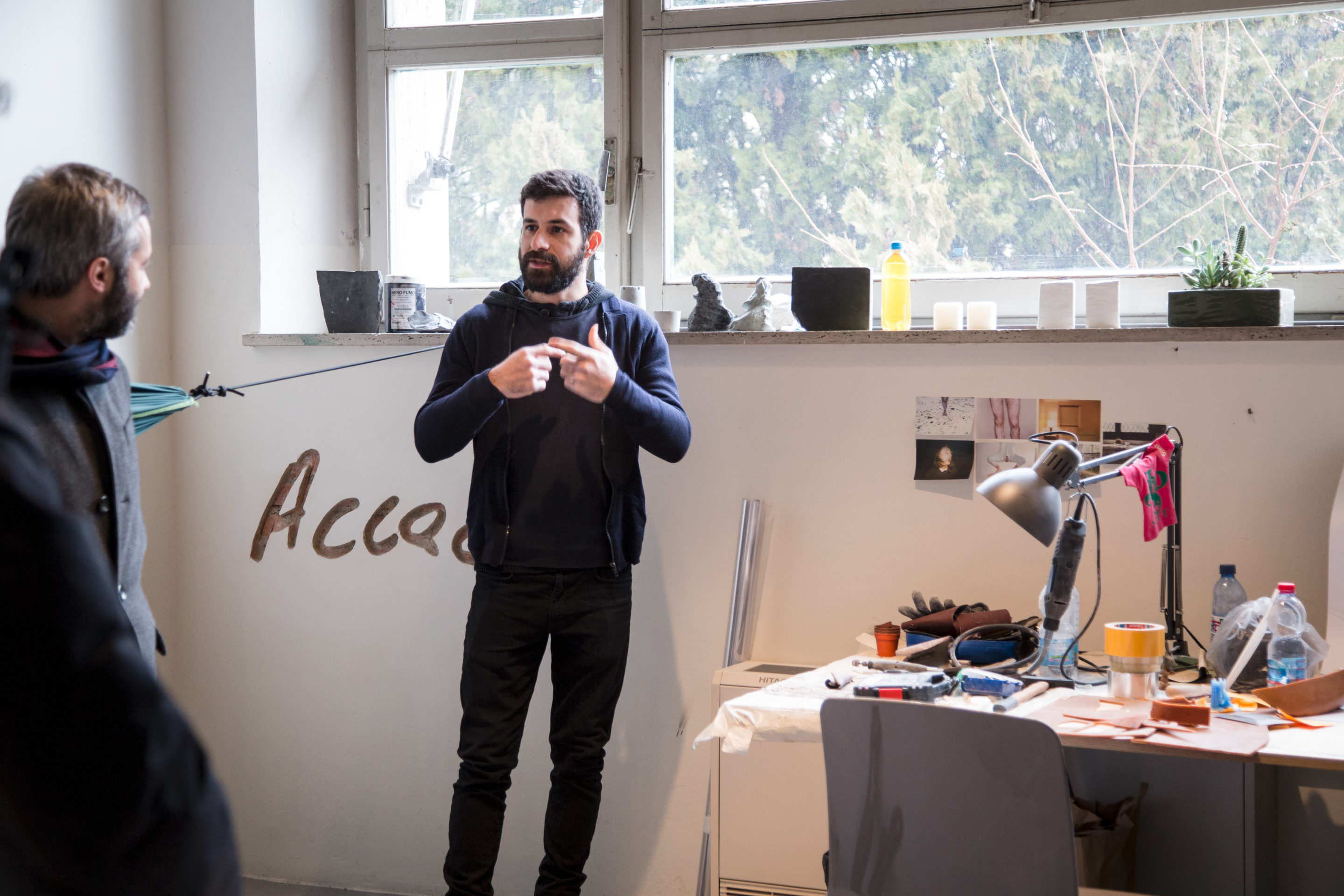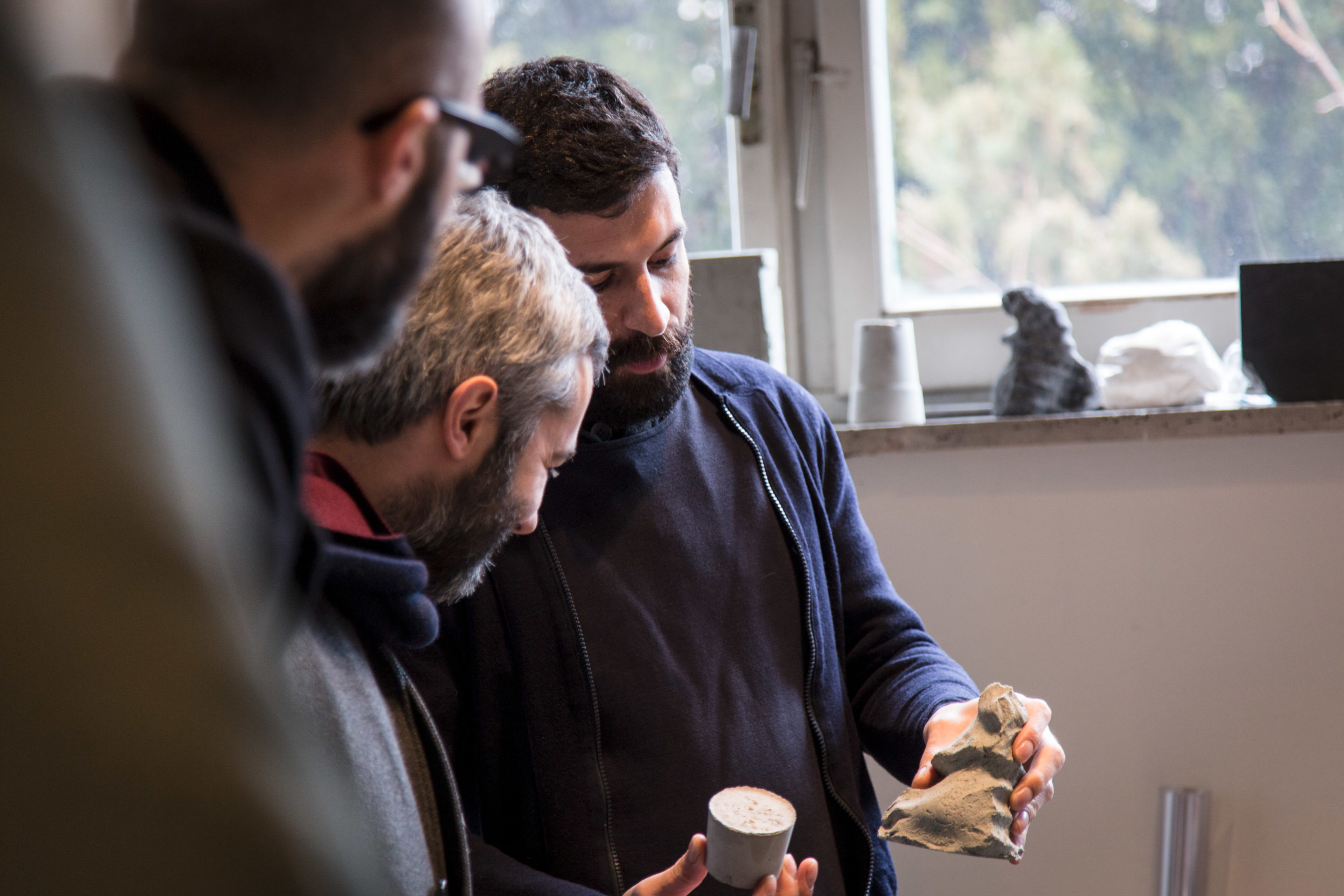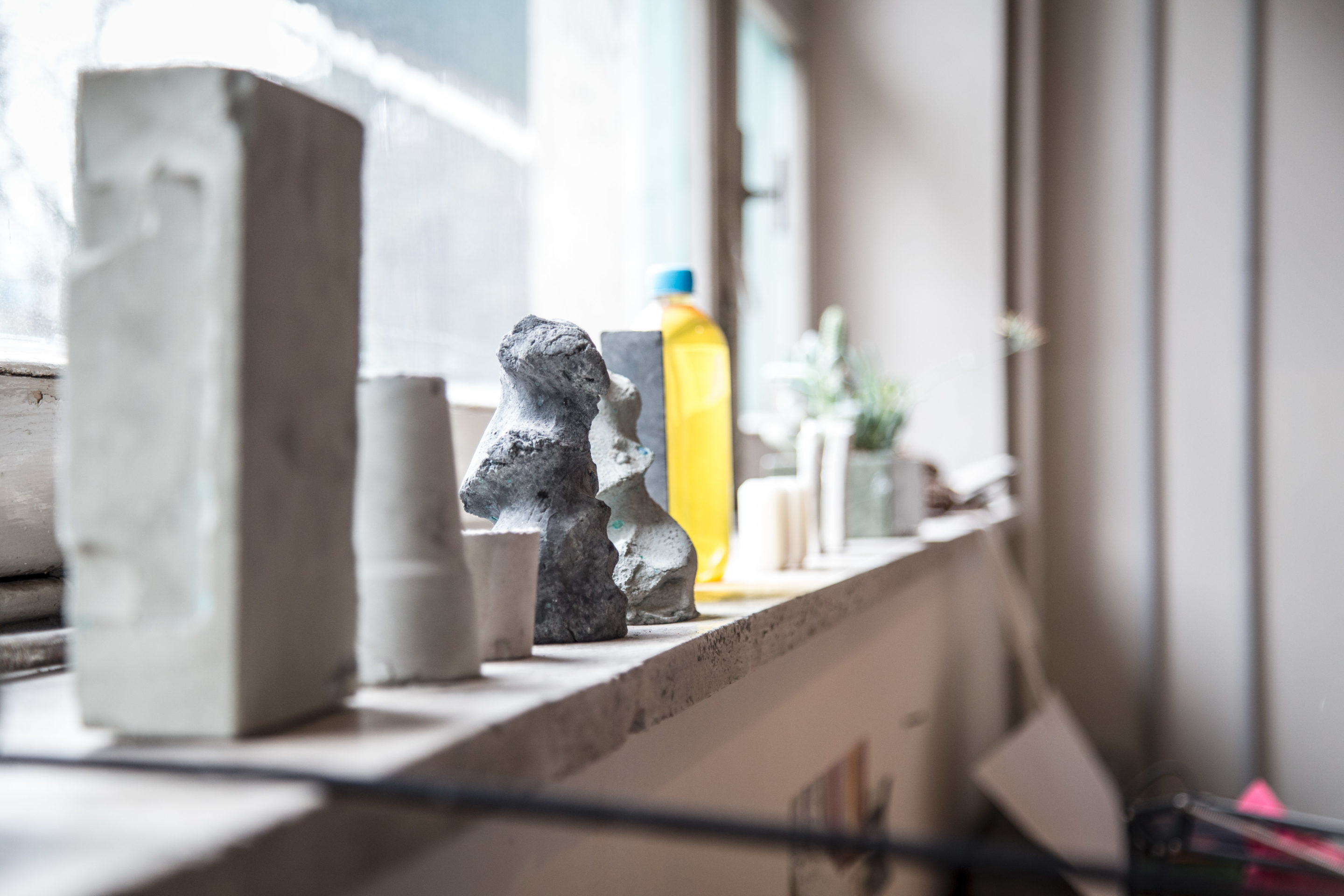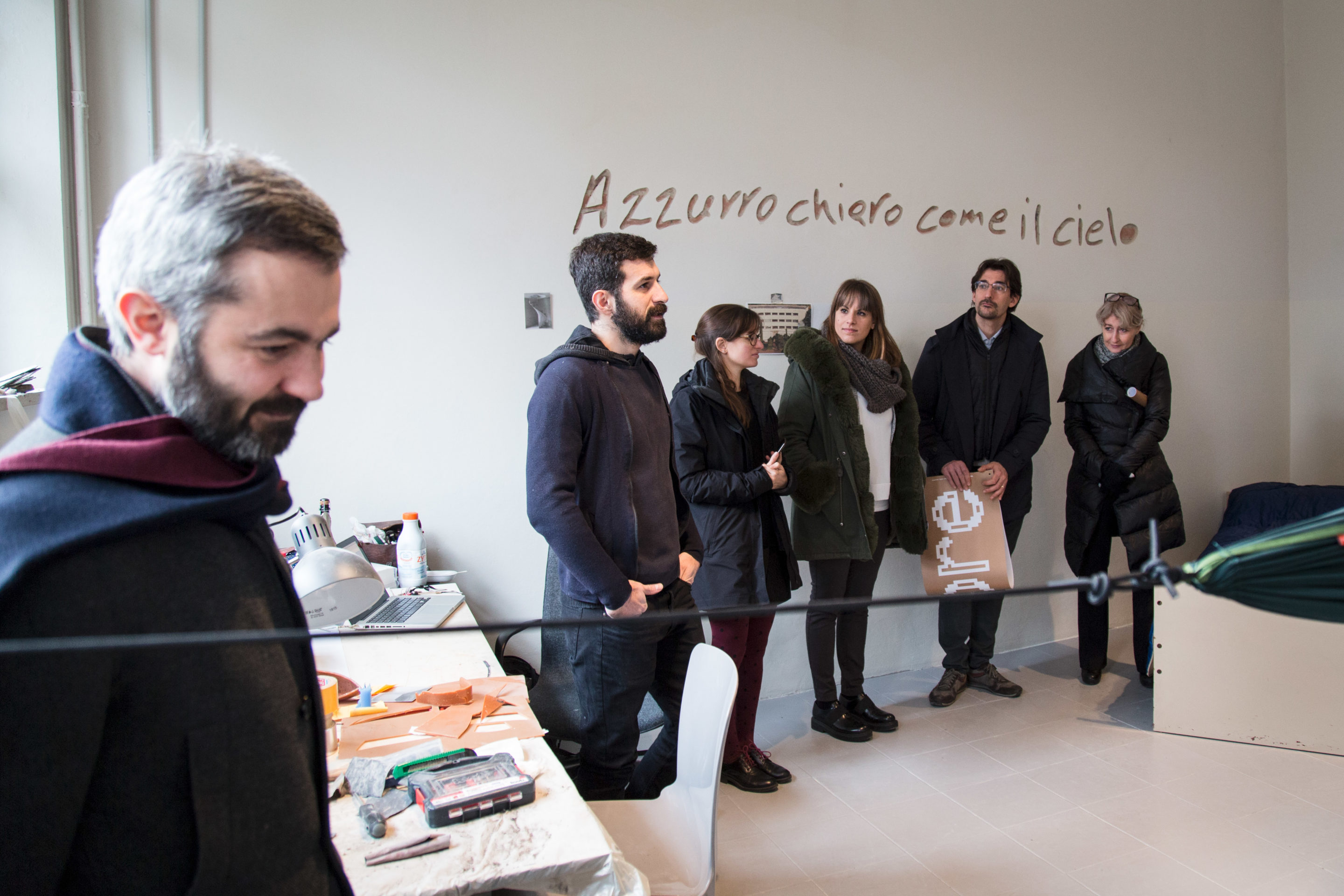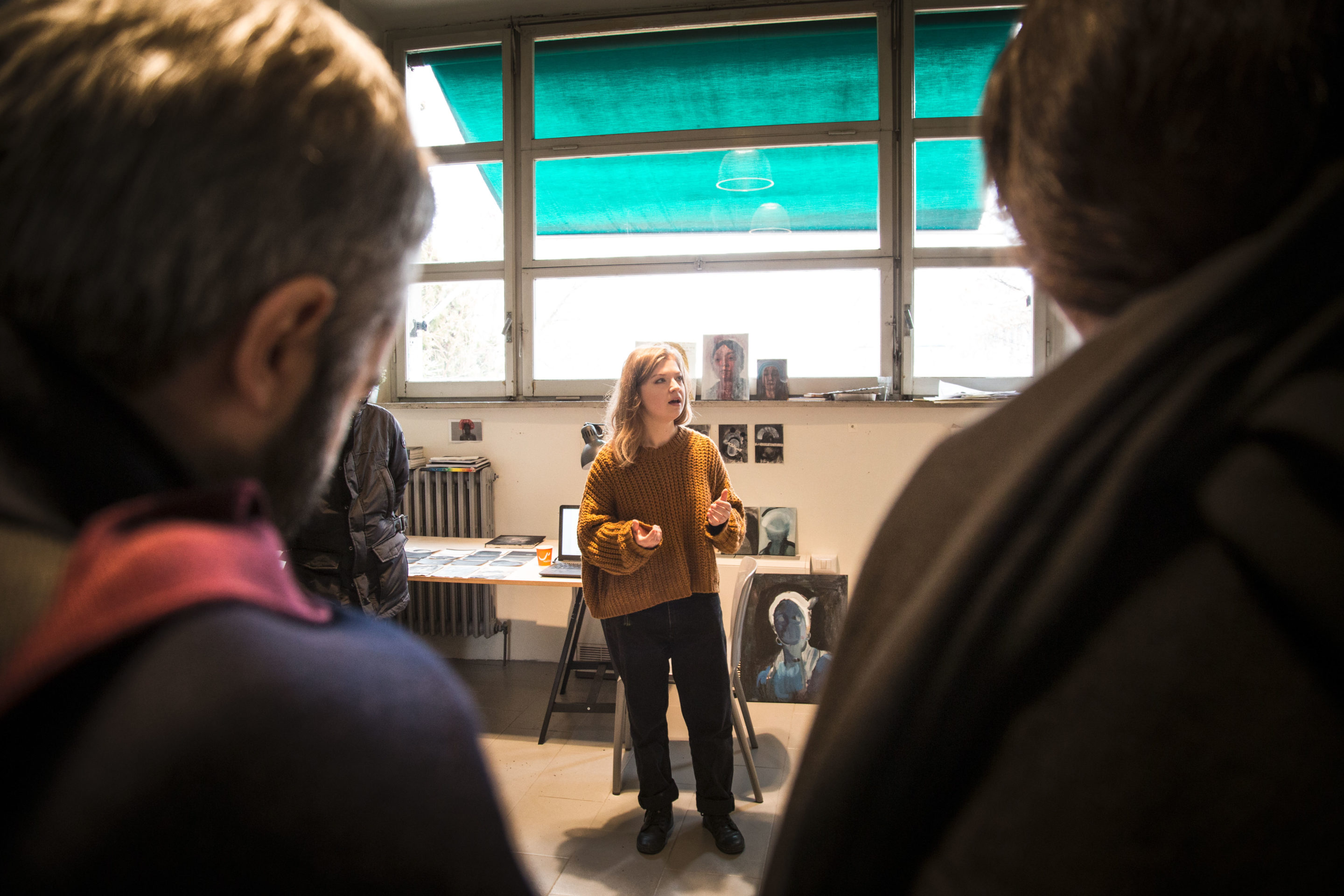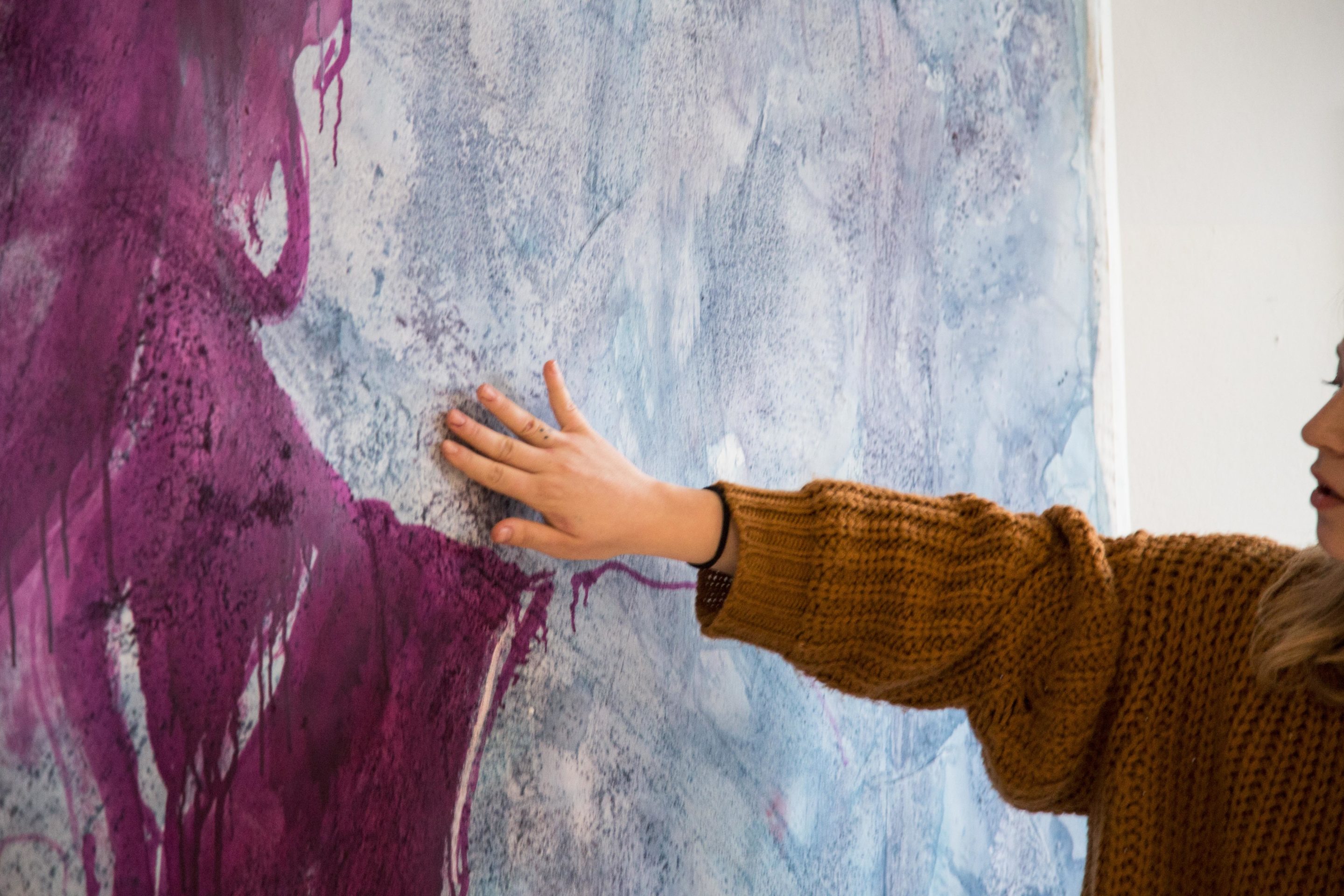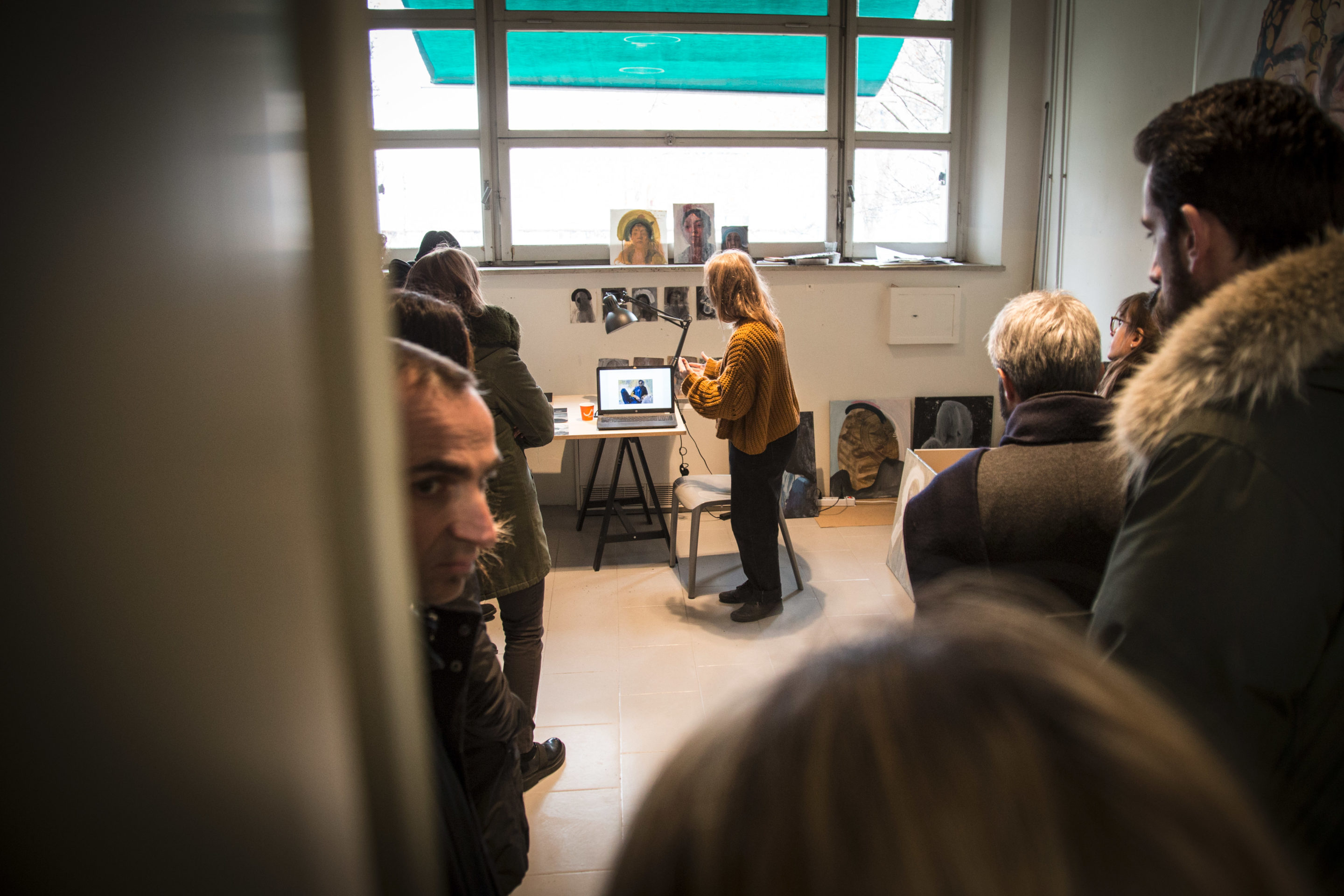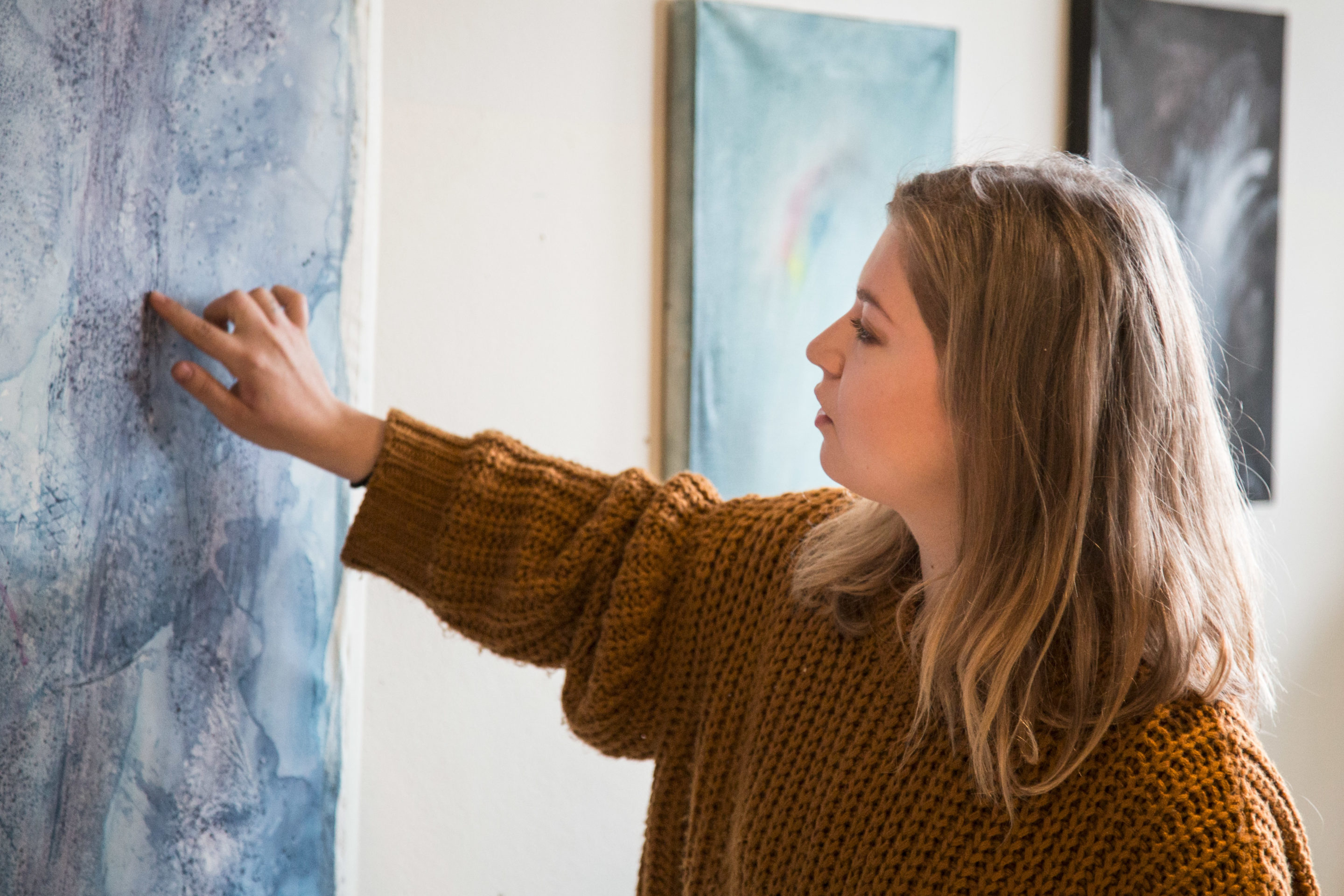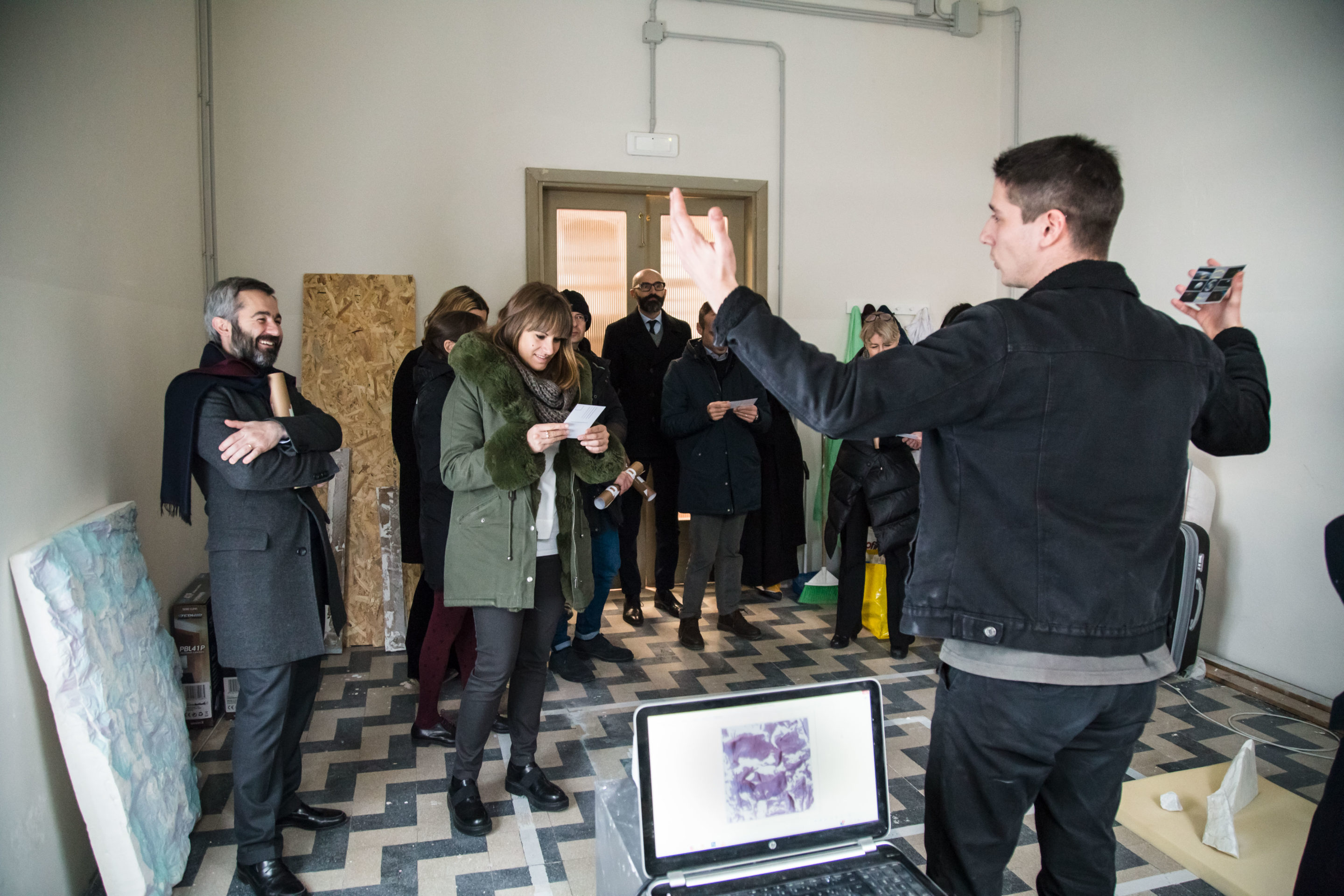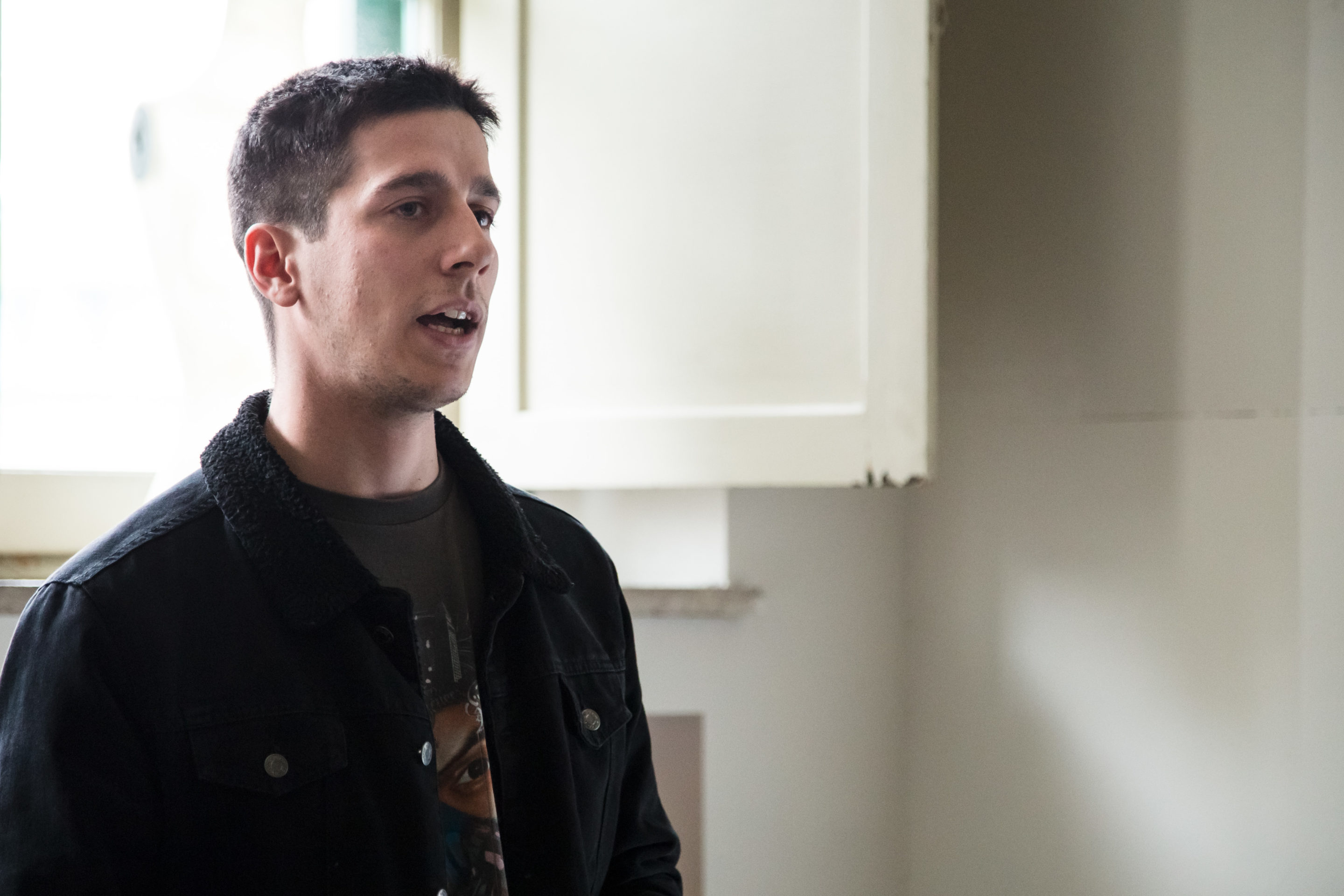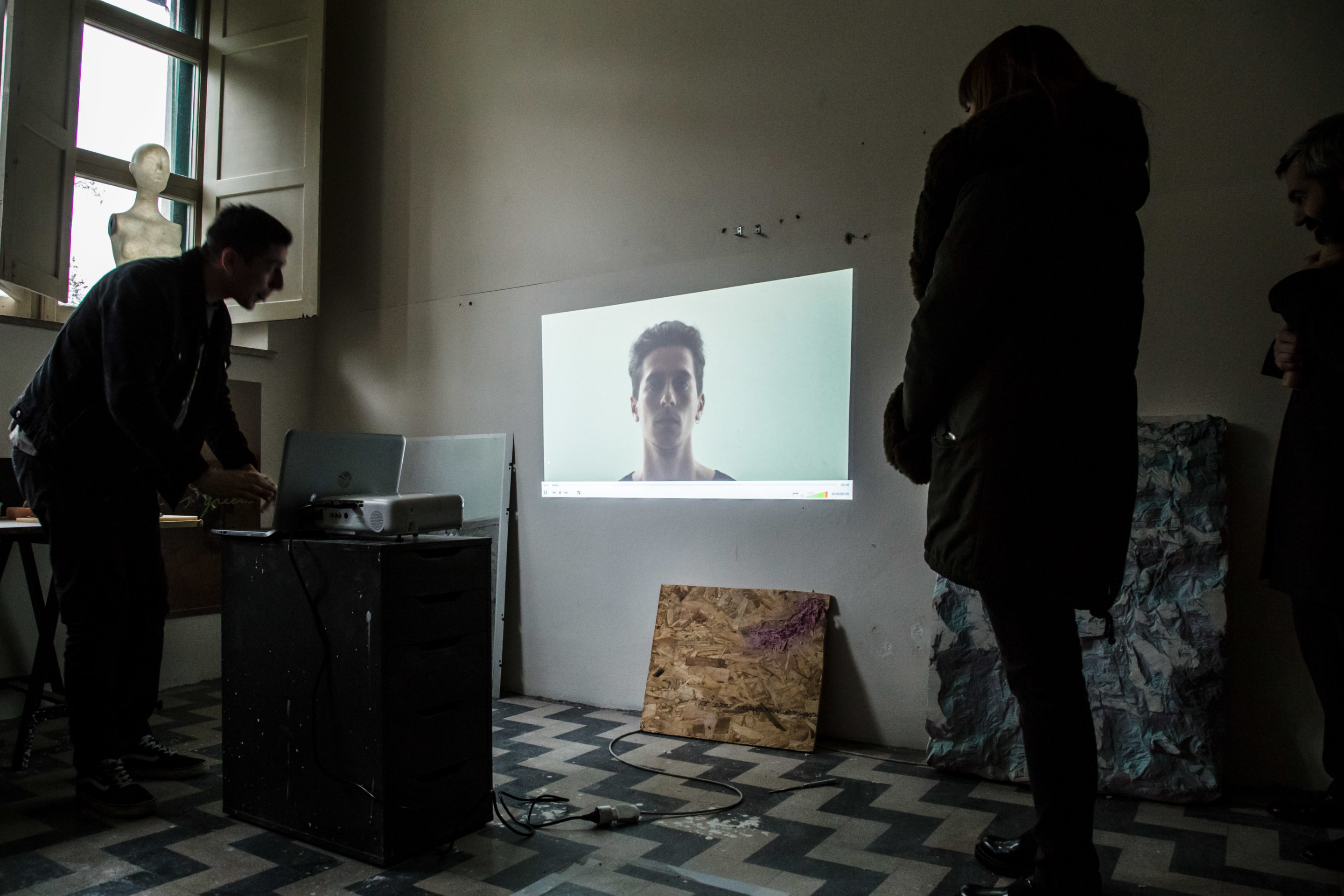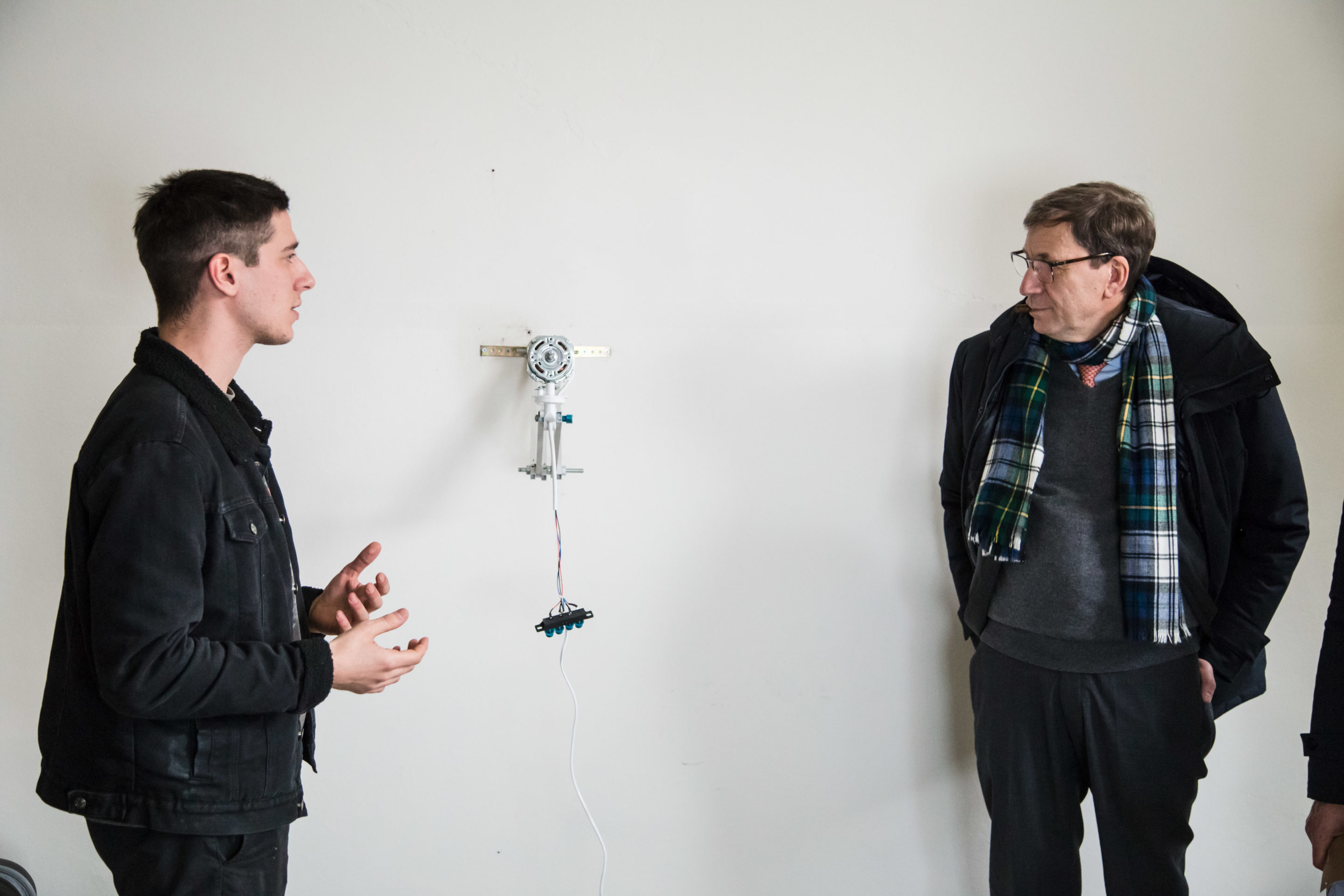Studio visit: speaking to the artists in residence
in a visit to the ateliers, the artists talk about their lives and their works for the final exhibition
On thursday 31 january, the artists in residence welcomed their host, Manifattura Tabacchi, for a visit to their studios. They recounted their experiences both as people and, perhaps for the first time, as young artists. It was also an opportunity to speak about the research and reflections that had led them to create the works that would be included in the final exhibition, which opened on 20 march.
The first person to open up their atelier was Stefano Giuri, already well-known at the Manifattura thanks to his work with Toast, an independent space in the old porter’s lodge which is dedicated to emerging young artists. Speaking about the place which has hosted him throughout his residency, Stefano said, “here, everything I touch is full of memory”. The artist found a wall where an execution had taken place during the Second World War, and used this as the inspiration for his work, taking casts of the bullet marks in the brickwork. The idea is to add another aspect, away from the historical.
Speaking about Toast, Stefano says that “it was set up because we didn’t have an independent space in Florence. When I saw the porter’s lodge, I felt that it was the right place at the right time for emerging young artists. We hope we will be able to continue with this project. It’s not a gallery as it hosts works, it doesn’t sell anything”.
Matteo Coluccia was also inspired, in part, by the memory of the Manifattura and the people who created its history, from the workers to their families. Festa is the name of the work which he created for the exhibition. The young artist, who usually works with performance as a means of expression, rather than installation, brought together reflections on the concept of death that he carried out over 18 months. This doesn’t mean just physical death, but also the way a vision loses its power, the way an image loses all its content until it becomes simply a commodity and, in a particular way, information inside the media circuitry.
The Festa installation separates itself from the image and uses its language. As the artist says: “I wanted something that evoked a state. The idea of a party makes me think of something that needs to be activated, for example, the machine of Instagram. And so the frame becomes something like a mortuary”.
Continuing this reflection, Matteo Coluccia affirms that everybody can be an artist through their photos, a pure democratic approach. These days anybody can be an artist. What is important is the interpretation of an artwork which, in his opinion, everybody must be free to understand as they wish. The artist is only interested up to a certain point in the message of the work being conveyed: “I give clues, I set it out and present it in a certain way. I give the viewer aesthetic hints but they have to add something themselves. I don’t want to have full control. I put down the foundation, the viewer completes it. This activates a process of growth and evolution”.
My arms are in pieces from hugging the clouds. Lori Lako took inspiration from this phrase for her final project. Starting with the image of two children’s swimming armbands, the artist, originally from Albania, focused on a political reflection of the sea used by migrants to cross borders. In this vision the armband, in a positive sense, is a symbol of lightness and salvation.
Before speaking about her work for the exhibition, Lori Lako recalled her life in Albania through the use of unsent postcards, photographs depicting her with her family, and a video that she herself took through a hole, left by a bullet in 1997, in the doorway of the building where she lived.
Mohsen Baghernejad Moghanjooghi was born in Tehran and he still lives in Iran with his family. He has lived and worked in Milan, where he started working with fabrics before beginning his studies at the Albertina Academy in Turin.
Most of his works are written in the languages he speaks, namely persian, turkish, italian and english. His works are characterised by the use of cement, mixed with various materials, such as copper sulphate. In the words of the artist, “the thing that I find curious about cement is that when I used to work with my brother in construction, people wondered why the cement was wet. These people had not studied but had learned architecture by themselves and so they understood that cement absorbs water for up to fifty years and, in this way, it becomes stronger”.
Tatiana Stropakaiová is the only artist out of those in residence whose work is solely dedicated to painting, focussing on portraiture. She takes figures from different historical times, which refer to the theme of memory. “What I want is to get down to a more emotional level and not just portray the purely physical aspects“. This is how the artist describes her paintings, very figurative and realistic, explaining that her personal philosophy is to understand how far she can go in finding how many shapes there are in a face and how many emotions these shapes can convey.
For the final exhibition, Tatiana wanted to display a combination of large and small images, with varying degrees of realism. She wanted to convey her intentions and, above all, her feelings, and she wanted to do this through the representation of a single subject, taken from Venetian Girl, painted by Frank Duveneck in 1880. “There is only one subject but my perception of her changes every day. Every day I discover something”.
The visit to the studios concluded with Gioele Pomante. His work is a mix of paintings, abstract and figurative sculpture related to the transformation of matter, “I am interested in existential reflections. And I try to aestheticize my doubts through my work. The sea is the ideal place to stop and think about these things. The sky and the stars acquire meaning which can project us towards infinity”.
Without getting into the specifics of his final project, Giole told us about a parallel project, postcards from planet earth: “someone comes to earth and needs postcards. We are here but there is much more. We are part of something more complex”.
